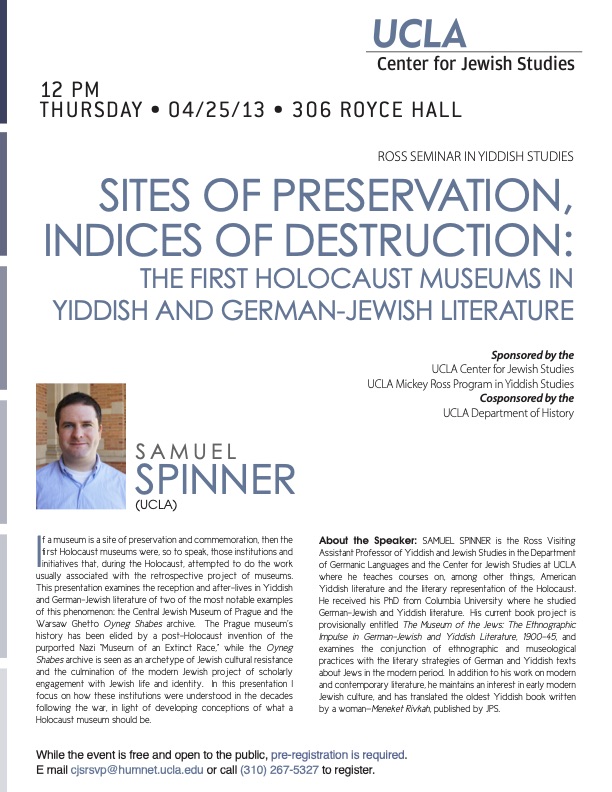
If a museum is a site of preservation and commemoration, then the first Holocaust museums were, so to speak, those institutions and initiatives that, during the Holocaust, attempted to do the work usually associated with the retrospective project of museums. This presentation examines the reception and after-lives in Yiddish and German-Jewish literature of two of the most notable examples of this phenomenon: the Central Jewish Museum of Prague and the Warsaw Ghetto Oyneg Shabes archive. The Prague museum’s history has been elided by a post-Holocaust invention of the purported Nazi “Museum of an Extinct Race,” while the Oyneg Shabes archive is seen as an archetype of Jewish cultural resistance and the culmination of the modern Jewish project of scholarly engagement with Jewish life and identity. In this presentation I focus on how these institutions were understood in the decades following the war, in light of developing conceptions of what a Holocaust museum should be.
About the Speaker: SAMUEL SPINNER is the Ross Visiting Assistant Professor of Yiddish and Jewish Studies in the Department of Germanic Languages and the Center for Jewish Studies at UCLA where he teaches courses on, among other things, American Yiddish literature and the literary representation of the Holocaust. He received his PhD from Columbia University where he studied German-Jewish and Yiddish literature. His current book project is provisionally entitled The Museum of the Jews: The Ethnographic Impulse in German-Jewish and Yiddish Literature, 1900-45, and examines the conjunction of ethnographic and museological practices with the literary strategies of German and Yiddish texts about Jews in the modern period. In addition to his work on modern and contemporary literature, he maintains an interest in early modern Jewish culture, and has translated the oldest Yiddish book written by a woman—Meneket Rivkah, published by JPS.